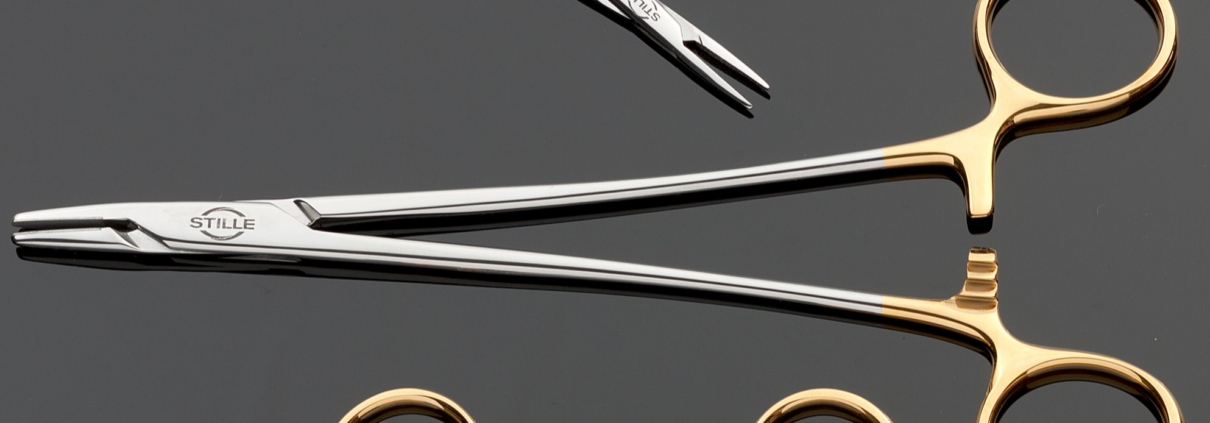Why Buying the Best Surgical Instruments Can Save You Money
It might sound counterintuitive: How can an instrument that costs you several hundred pounds save you money compared to lower quality instruments that you can buy for a fraction of the price?
Below are four clear reasons why:
1. Longevity
High quality surgical instruments are always manufactured with longevity in mind. Crafted by experts in instrument design and metallurgy, they understand how to create surgical tools that optimise performance and durability.
For example, top manufacturers will always choose the highest quality stainless steel rather than lower grade metal, as this will significantly enhance instrument longevity.
They are also likely to produce ceramic-coated instruments, which provide four to five times higher surface hardness than stainless steel, reduced abrasiveness and greater resistance to rust and corrosion.
They might also make instruments in Titanium, which is another high-performance metal that is recognised for its superior durability, being both fracture-proof and non-rusting.
What’s more, instruments that are hand-crafted, rather than made by machine, can have incredibly long life expectancy.
For example, in a study to test whether Stille hand-crafted surgical scissors really did deliver on the manufacturer warranty of 30 years, it was found that 74% of the Stille scissors used in a busy surgical centre were actually older than 50 years.(1)
2. Cost-in-Use
Of course, whilst top surgeons and the sterilization services team might well value long-lasting surgical instruments, procurement teams charged with reducing operating room costs might find it hard to justify larger upfront costs for buying these products.
This is where a lifetime warranty comparison can really shine a light on the value of investing in higher quality instruments. By simply comparing the length of instrument warranties and dividing those time periods either by instrument cost or instrument use, it can be easily seen that the highest quality instruments will always be the star performers when it comes to value for money.
Obviously, high quality instruments with the longest warranties will prove the most cost-effective, so whichever instrument you are looking to purchase, make sure to research the various manufacturer warranties before buying anything. Whilst some will offer a 30-year warranty, others may only offer 1-5 years.
Alternatively, if your procurement team is considering single-use disposable instruments, a cost-in-use comparison with a high quality reusable instrument will invariably show the latter to be the most cost-effective investment.
For example, one study of laparoscopic instruments showed that “the total cost for single-use instruments would have been more than seven times that for reusable instruments.”(2)
3. Minimal servicing costs
Another cost advantage to purchasing high quality surgical instruments is that they will often only need servicing every couple of years and some brands even offer the first service free within the initial purchase price.
What’s more, some high-quality instruments will be designed to allow for the instrument parts to be dismantled during servicing by the manufacturer, allowing for thorough inspection of corrosion at the joints to help maximise instrument longevity.
Low-quality instruments will not only require servicing more regularly, causing greater cost and disruption to instrument availability, they are also more likely to develop hairline fractures and corroded surfaces that mean effective servicing is no longer possible.
4. Less environmental cost
There is also an environmental cost benefit for choosing long-lasting quality instruments over cheaper reusables in many cases.
For example, a study that compared mainly German brand reusable scissors to both German and Pakistani disposable scissors revealed that the reusable scissors were better for the environment. (3)
This is because whilst they take more energy to come to market, the reusable scissors are used thousands of times more than the disposable ones.
In addition, there is less ongoing environmental impact from servicing high-quality reusable surgical instruments than low-quality ones, which will require much more documentation, packaging, labelling and transportation for servicing.
Hold out for high quality
As can be seen from the above, it is easy to justify the greater outlay for purchasing high-quality reusable surgical instruments, even in the face of significant budgetary pressures.
In fact, the rapidity with which poor quality instruments degrade means that, even if you have missed the boat for submitting instrument requests for this financial year, it is worth waiting until you have the budget to buy the best in twelve months’ time.
To view our range of high-quality surgical instruments.
You can also contact our Cairn instrument team on 0845 226 0185 to arrange for a demonstration of our surgical instruments or to evaluate instruments on loan.
REFERENCES:
(1) Dahl G, Ölveback T, Wiklung L. Quality surgical instruments best investment. Presented: SEORNA, Swedish Operating Nurse Association Conference Meeting, 29-30 November 2012
(2) Gabriel N Schaer, MD, Ossi R Koechli, MD and Urs Haller, MD. Single-use versus reusable laparoscopic surgical instruments: A comparative cost analysis. American Journal of Obstetrics & Gynecology Volume 173, Issue 6, Pages 1812-1815, December 1995
(3) http://www.sustainable-manufacturing.com/files/ 982_JGARG-Review_1-2012_Scissors_Aug2012_7g0i26.pdf



